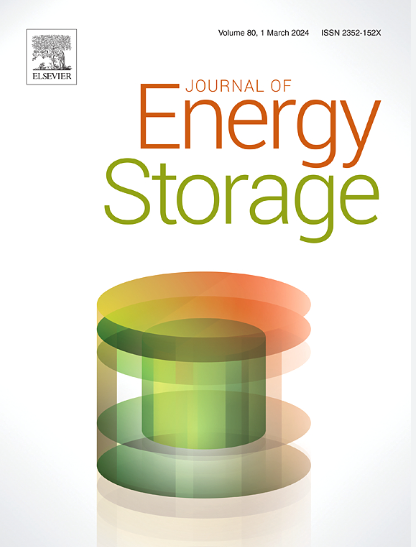Sodium ion intercalated NH4V4O10 with adjustable interlayer-spacing as an advanced cathode for aqueous zinc ion battery
IF 8.9
2区 工程技术
Q1 ENERGY & FUELS
引用次数: 0
Abstract
Ammonium vanadate has increasingly been the focus of attention in the field of aqueous zinc ion battery due to its high theoretical specific capacity. However, they suffer from slow kinetics and loss of capacity due to irreversible deamidation. Herein, we fabricated a series of Na+-intercalating NH4V4O10 (SNVO) with lamellar structure via a simple one-step hydrothermal method, in which SNVO30 exhibited high capacity and satisfactory rate performance in the storage process for Zn2+. Sodium alginate had a role in the modulation of microstructures during the synthesis, which improved the contact area between the cathode and the electrolyte. It was found that Na+ increased the interlayer spacing, and served as a “pillar” between the V![]() O layers to reinforce the SNVO during the cycling process, thereby enhancing its stability and accelerating reaction kinetics. The generation of additional oxygen vacancies facilitated an alteration in the electronic structure and enhanced the Zn2+ diffusion capacity. Specifically, the SNVO30 exhibited high initial specific capacity of 447.2 mAh g−1 at 2.0 A g−1. And a specific capacity of 228.3 mAh g−1 was maintained after 1500 cycles at 10 A g−1. This work provides a reference for the development of high-performance aqueous zinc ion battery cathode materials.
O layers to reinforce the SNVO during the cycling process, thereby enhancing its stability and accelerating reaction kinetics. The generation of additional oxygen vacancies facilitated an alteration in the electronic structure and enhanced the Zn2+ diffusion capacity. Specifically, the SNVO30 exhibited high initial specific capacity of 447.2 mAh g−1 at 2.0 A g−1. And a specific capacity of 228.3 mAh g−1 was maintained after 1500 cycles at 10 A g−1. This work provides a reference for the development of high-performance aqueous zinc ion battery cathode materials.
求助全文
约1分钟内获得全文
求助全文
来源期刊

Journal of energy storage
Energy-Renewable Energy, Sustainability and the Environment
CiteScore
11.80
自引率
24.50%
发文量
2262
审稿时长
69 days
期刊介绍:
Journal of energy storage focusses on all aspects of energy storage, in particular systems integration, electric grid integration, modelling and analysis, novel energy storage technologies, sizing and management strategies, business models for operation of storage systems and energy storage developments worldwide.
 求助内容:
求助内容: 应助结果提醒方式:
应助结果提醒方式:


